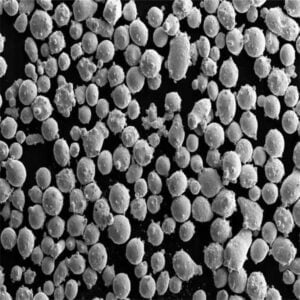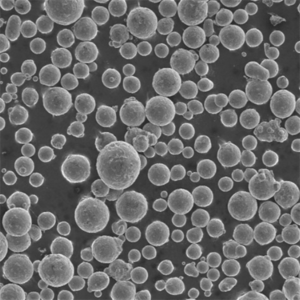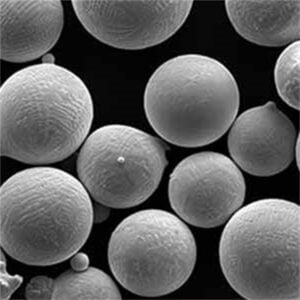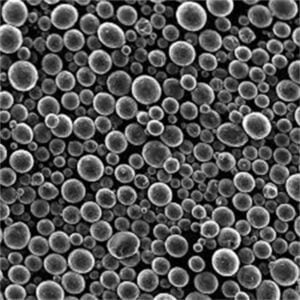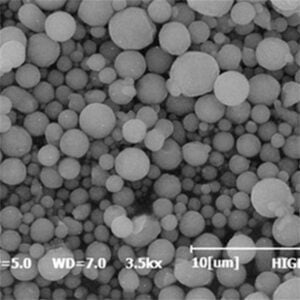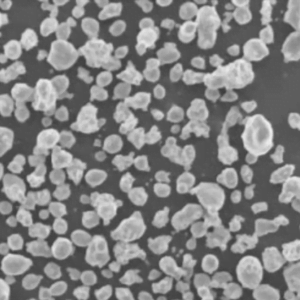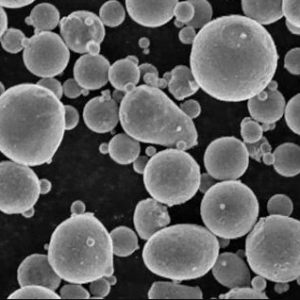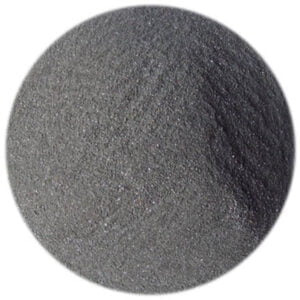Proszek FeSiCr dla systemu sieciowego
Spis treści
W nieustannie rozwijającym się świecie systemów sieciowych zapewnienie niezawodnego zasilania ma kluczowe znaczenie. Centra danych, węzły komunikacyjne i infrastruktura krytyczna zależą od nieprzerwanego przepływu energii elektrycznej. To właśnie tutaj FeSiCr, potężny stop składający się z żelaza (Fe), krzemu (Si) i chromu (Cr), wkracza na scenę. Ale czym dokładnie jest Proszek FeSiCri w jaki sposób przyczynia się do siły i odporności systemu sieciowego?
Zrozumieć FeSiCr: Potęga materiału
Proszek FeSiCr jest stopem metalu, który powstał w wyniku połączenia żelaza, krzemu i chromu w określonych proporcjach. Ta silna mieszanka nadaje proszkowi unikalny zestaw właściwości, czyniąc go bardzo poszukiwanym materiałem w różnych zastosowaniach, szczególnie w dziedzinie systemów sieciowych.
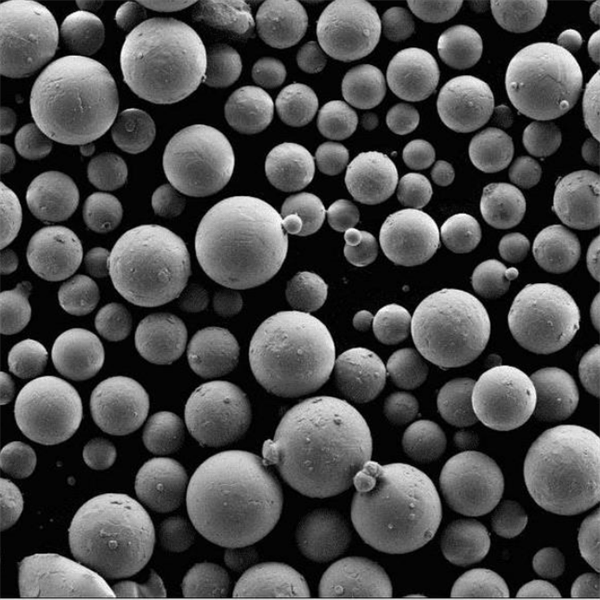
Skład, właściwości i charakterystyka Proszki FeSiCr
| Nieruchomość | Opis |
|---|---|
| Skład | Proszek FeSiCr zazwyczaj składa się z 70-80% żelaza, 1-5% krzemu i 15-20% chromu. Różnice w tych wartościach procentowych mogą dostosować właściwości proszku do konkretnych potrzeb. |
| Wysoka wytrzymałość | FeSiCr charakteryzuje się imponującą wytrzymałością na rozciąganie i granicą plastyczności, dzięki czemu jest w stanie wytrzymać znaczne naprężenia mechaniczne bez deformacji. Przekłada się to na solidne komponenty sieciowe, które mogą wytrzymać trudne warunki pracy. |
| Doskonała odporność na utlenianie | FeSiCr wykazuje doskonałą odporność na utlenianie w podwyższonych temperaturach. Właściwość ta ma kluczowe znaczenie w systemach sieciowych, w których komponenty często generują ciepło, potencjalnie prowadząc do korozji i pogorszenia wydajności. |
| Zwiększona odporność na zużycie | Obecność chromu w FeSiCr przyczynia się do wyjątkowej odporności na zużycie. Jest to szczególnie korzystne w przypadku elementów sieci narażonych na tarcie i ruch, zapewniając wydłużoną żywotność komponentów. |
| Dobra przewodność elektryczna | Choć nie jest to jego główna zaleta, proszek FeSiCr wykazuje odpowiednią przewodność elektryczną, wystarczającą do wielu zastosowań w systemach sieciowych. |
| Właściwości magnetyczne | W zależności od konkretnego składu, FeSiCr może wykazywać właściwości ferromagnetyczne lub paramagnetyczne. Cecha ta może być dostosowana do konkretnych potrzeb komponentów sieci. |
Zastosowania proszku FeSiCr w systemach sieciowych
Proszek FeSiCr znajduje swoje miejsce w wielu komponentach systemów sieciowych, z których każdy korzysta z jego unikalnych właściwości. Oto kilka znaczących przykładów:
| Zastosowanie | Zalety proszku FeSiCr |
|---|---|
| Szyny zbiorcze i złącza | Wysoka wytrzymałość i odporność na zużycie stali FeSiCr sprawiają, że idealnie nadaje się ona do szyn zbiorczych i złączy, kluczowych komponentów do dystrybucji energii elektrycznej w systemach sieciowych. Części te wymagają zdolności do przenoszenia znacznych prądów bez ulegania zużyciu. |
| Radiatory i komponenty rozpraszające ciepło | Ze względu na doskonałą odporność na utlenianie, proszek FeSiCr okazuje się cenny w radiatorach i komponentach rozpraszających ciepło. Wynika to z faktu, że elementy te zarządzają ciepłem generowanym przez sprzęt sieciowy, a odporność FeSiCr na wysokie temperatury zapewnia długowieczność komponentów i wydajne rozpraszanie ciepła. |
| Ekranowanie EMI/RFI | Właściwości magnetyczne proszku FeSiCr można wykorzystać do ekranowania zakłóceń elektromagnetycznych (EMI) i zakłóceń o częstotliwości radiowej (RFI). Chroni to wrażliwy sprzęt sieciowy przed zakłóceniami elektromagnetycznymi, zachowując integralność danych i funkcjonalność systemu. |
| Zastosowania wytwarzania przyrostowego (AM) | Proszek FeSiCr doskonale sprawdza się w technikach wytwarzania przyrostowego (AM), takich jak druk 3D. Pozwala to na tworzenie niestandardowych komponentów sieciowych o złożonej geometrii, oferując większą elastyczność projektowania i potencjalnie optymalizując wydajność systemu sieciowego. |
Specyfikacje, rozmiary i gatunki Proszki FeSiCr
Proszki FeSiCr są dostępne w różnych specyfikacjach, rozmiarach i gatunkach, aby zaspokoić różnorodne wymagania systemów sieciowych. Oto zestawienie kilku kluczowych czynników, które należy wziąć pod uwagę:
| Czynnik | Opis |
|---|---|
| Wielkość cząstek | Wielkość cząstek proszku FeSiCr zazwyczaj waha się od 10 do 150 mikronów, wpływając na płynność materiału i końcowe właściwości komponentu. Drobniejsze proszki oferują lepsze wykończenie powierzchni, ale mogą wymagać specjalnych technik przetwarzania. |
| Płynność | Płynność proszku określa jego łatwość obsługi i przydatność do różnych technik AM lub formowania wtryskowego metali (MIM). Wysoka płynność zapewnia płynne przetwarzanie i stałą gęstość komponentów. |
| Gęstość pozorna | Parametr ten odnosi się do masy proszku na jednostkę objętości. Wpływa na zużycie materiału i wydajność pakowania podczas procesu produkcyjnego. |
| Stopnie | Istnieją różne gatunki proszku FeSiCr, z niewielkimi różnicami w składzie dostosowanymi do konkretnych zastosowań. Na przykład, niektóre gatunki mogą mieć priorytetowo traktowaną odporność na zużycie, podczas gdy inne mogą koncentrować się na lepszej przewodności elektrycznej. |
Dostawcy i ceny Proszki FeSiCr
Kilku wiodących dostawców proszków metalowych oferuje proszek FeSiCr w różnych specyfikacjach. Poniżej przedstawiamy kilku znaczących graczy:
Ceny proszków FeSiCr
Niestety, określenie dokładnego kosztu proszku FeSiCr jest trudne ze względu na kilka czynników. Oto, co wpływa na cenę:
- Specyfikacja proszku: Rozmiar cząstek, płynność i gatunek odgrywają ważną rolę. Drobniejsze proszki o doskonałej płynności i specyficznej charakterystyce gatunku mają zazwyczaj wyższą cenę.
- Ilość zamówienia: Zakupy hurtowe zazwyczaj korzystają z efektu skali, co prowadzi do niższych kosztów jednostkowych w porównaniu z mniejszymi zamówieniami.
- Wahania rynkowe: Globalne ceny metali i dynamika łańcucha dostaw mogą wpływać na koszty surowców, ostatecznie wpływając na ceny proszku FeSiCr.
Wgląd w specyficzne proszki metali FeSiCr
Oto zestawienie dziesięciu najważniejszych proszków metali FeSiCr, podkreślające ich kluczowe cechy i potencjalne zastosowania w systemach sieciowych:
| Metalowy proszek | Opis | Aplikacje systemu sieciowego |
|---|---|---|
| AMPCOR 9740 (Höganäs AB) | Ten proszek FeSiCr charakteryzuje się zrównoważonym składem (75% Fe, 4% Si, 21% Cr) o doskonałej odporności na zużycie i wysokiej wytrzymałości. | Idealny do szyn zbiorczych, złączy i innych komponentów wymagających wyjątkowej wytrzymałości mechanicznej. |
| Höganäs AMPCOR 9741 (Höganäs AB) | Ta odmiana charakteryzuje się nieco wyższą zawartością chromu (73% Fe, 3% Si, 24% Cr) w porównaniu do AMPCOR 9740, co dodatkowo zwiększa odporność na zużycie. | Szczególnie nadaje się do zastosowań, w których występuje znaczne tarcie i zużycie, takich jak styki ślizgowe i ruchome części. |
| Carpenter Incus 316L (Carpenter Additive Powder Products) | Ten proszek FeSiCr oferuje skład podobny do stali nierdzewnej 316L (70% Fe, 1% Si, 19% Cr, z dodatkami Ni i Mo). Charakteryzuje się doskonałą odpornością na korozję i biokompatybilnością. | Chociaż nie jest to ściśle związane z systemem sieciowym, proszek ten może być cenny dla komponentów sieciowych potencjalnie narażonych na trudne warunki lub wymagających poziomu biokompatybilności. |
| AM BASF AMثير (AMBASF) (BASF) | Ten proszek FeSiCr od BASF ma unikalną nazwę ("AMثير" w języku arabskim oznacza "AM Power") i charakteryzuje się wysoką wytrzymałością oraz dobrą płynnością. | Dobrze nadaje się do zastosowań AM w systemach sieciowych ze względu na łatwość przetwarzania i silne właściwości mechaniczne. |
| SLM Solutions FeSiCr15 (Rozwiązania SLM) | Ta oferta SLM Solutions stawia na równowagę między wytrzymałością a przewodnością elektryczną (75% Fe, 3% Si, 17% Cr, z dodatkami Mn). | Potencjalny wybór dla komponentów sieciowych wymagających zarówno integralności strukturalnej, jak i odpowiedniej wydajności elektrycznej. |
| LPW FeCrSi (LPW Technology) | Proszek FeCrSi firmy LPW Technology oferuje standardowy skład (75% Fe, 4% Si, 21% Cr) o dobrych właściwościach ogólnych. | Wszechstronna opcja do różnorodnych zastosowań w systemach sieciowych, w których wymagana jest równowaga między wytrzymałością, odpornością na zużycie i odpornością na utlenianie. |
| EOS M 290 (EOS GmbH) | Ten proszek FeSiCr firmy EOS charakteryzuje się nieco niższą zawartością chromu (73% Fe, 3% Si, 19% Cr) w porównaniu do niektórych konkurentów. Oferuje on jednak doskonałą przetwarzalność dla technik AM. | Dobry wybór dla komponentów systemów sieciowych wymagających wysokiej precyzji druku 3D i łatwości produkcji. |
| AMBIT FeSiCr (AMBIT Powder) | Ten proszek FeSiCr od AMBIT Powder koncentruje się na zrównoważonym składzie (73% Fe, 3,5% Si, 19,5% Cr) o dobrych ogólnych właściwościach do różnych zastosowań. | Kolejna wszechstronna opcja dla różnych komponentów systemu sieciowego, w których wymagana jest równowaga między funkcjami. |
| Proto Labs FeSiCr (Proto Labs) | Proto Labs oferuje standardowy proszek FeSiCr o typowym składzie (75% Fe, 4% Si, 21% Cr). | Łatwo dostępna opcja prototypowania komponentów systemu sieciowego przy użyciu technik AM. |
| ExOne FeSiCr (ExOne) | Proszek FeSiCr firmy ExOne priorytetowo traktuje drukowalność w technikach AM z wtryskiem spoiwa. Szczegóły dotyczące jego składu nie są łatwo dostępne. | Potencjalnie dobrze nadaje się do komponentów systemów sieciowych wytwarzanych za pomocą technologii binder jetting AM, biorąc pod uwagę jej nacisk na drukowność. |
Zalety i wady proszków FeSiCr dla systemów sieciowych
Proszek FeSiCr oferuje atrakcyjną propozycję dla aplikacji sieciowych, ale ważne jest, aby zrozumieć jego mocne i słabe strony, aby podejmować świadome decyzje.
Zalety:
- Wyjątkowa wytrzymałość i odporność na zużycie: FeSiCr wyróżnia się w tych obszarach, dzięki czemu idealnie nadaje się do komponentów takich jak szyny zbiorcze i złącza, które przenoszą znaczne prądy elektryczne i potencjalne zużycie.
- Doskonała odporność na utlenianie: Sprzęt sieciowy często generuje ciepło, a odporność FeSiCr na utlenianie w podwyższonych temperaturach zapewnia długowieczność komponentów i wydajne rozpraszanie ciepła w radiatorach i komponentach rozpraszających.
- Ulepszone ekranowanie EMI/RFI: Właściwości magnetyczne FeSiCr można wykorzystać do stworzenia skutecznej ochrony przed zakłóceniami elektromagnetycznymi i radiowymi, chroniąc wrażliwy sprzęt sieciowy przed zakłócającymi falami elektromagnetycznymi.
- Wszechstronność w produkcji addytywnej: Proszek FeSiCr doskonale sprawdza się w technikach AM, umożliwiając tworzenie skomplikowanych komponentów sieciowych o złożonej geometrii. Sprzyja to elastyczności projektowania i potencjalnie optymalizuje wydajność systemu.
- Ulepszony zrównoważony rozwój: W porównaniu z tradycyjnymi procesami produkcyjnymi, które generują znaczne ilości odpadów, techniki AM wykorzystujące proszek FeSiCr mogą oferować bardziej zrównoważone podejście, potencjalnie zmniejszając ilość odpadów materiałowych.
Wady:
- Koszt: Proszek FeSiCr może być droższy niż niektóre tradycyjne materiały stosowane w systemach sieciowych. Czynniki takie jak rozmiar cząstek, płynność i gatunek mają wpływ na cenę.
- Ograniczona dostępność: Proszek FeSiCr, choć łatwo dostępny u głównych dostawców, może nie być tak powszechnie dostępny, jak niektóre powszechnie stosowane materiały sieciowe.
- Uwagi dotyczące przetwarzania: Techniki AM wykorzystujące proszek FeSiCr mogą wymagać specjalistycznego sprzętu i wiedzy w porównaniu z tradycyjnymi metodami produkcji.
Wybór właściwego Proszek FeSiCr Dla potrzeb systemu sieciowego
Wybór optymalnego proszku FeSiCr zależy od kilku czynników specyficznych dla wymagań systemu sieciowego:
- Funkcjonalność komponentu: Rozważ podstawową funkcję komponentu. Czy priorytetem jest wytrzymałość, odporność na zużycie, przewodność elektryczna, czy też kombinacja tych czynników?
- Technika produkcji: Czy będziesz używać technik AM czy tradycyjnych metod? Różne proszki FeSiCr są przeznaczone do określonych procesów AM.
- Rozważania dotyczące kosztów: Zrównoważyć koszt proszku z korzyściami wynikającymi z jego wydajności i ogólnym budżetem projektu.
- Złożoność projektu: Jeśli komponent sieciowy wymaga skomplikowanej geometrii, AM z proszkiem FeSiCr może być idealnym rozwiązaniem.
Zalecane jest skonsultowanie się z wykwalifikowanym dostawcą proszków metali i inżynierem systemów sieciowych. Mogą oni przeprowadzić użytkownika przez proces selekcji, zapewniając wybór najbardziej odpowiedniego rozwiązania. Proszek FeSiCr dla konkretnego zastosowania.
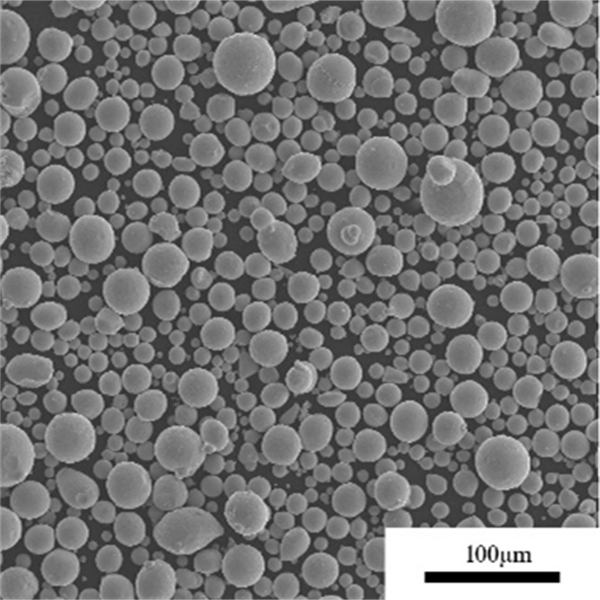
Najczęściej zadawane pytania
P: Czy proszek FeSiCr jest bezpieczny w użyciu?
O: Chociaż ogólnie jest to bezpieczne, zaleca się stosowanie odpowiednich procedur postępowania z proszkami metali. Obejmuje to noszenie odpowiedniego sprzętu ochrony osobistej (PPE), takiego jak rękawice, okulary ochronne i respirator podczas pracy z proszkiem luzem.
P: Czy proszek FeSiCr można poddać recyklingowi?
O: Tak, w zależności od konkretnego składu i ewentualnych zanieczyszczeń. Niektóre techniki AM pozwalają na recykling niezadrukowanego proszku FeSiCr, potencjalnie zmniejszając ilość odpadów i promując zrównoważony rozwój.
P: Jak proszek FeSiCr wypada na tle innych materiałów stosowanych w systemach sieciowych?
O: Tradycyjne materiały, takie jak miedź, oferują doskonałą przewodność elektryczną, ale FeSiCr wyróżnia się wytrzymałością, odpornością na zużycie i odpornością na utlenianie. Aluminium oferuje lekkość, ale FeSiCr charakteryzuje się większą wytrzymałością mechaniczną. Wybór ostatecznie zależy od konkretnych potrzeb danego elementu sieci.
P: Jakie są przyszłe perspektywy dla proszku FeSiCr w systemach sieciowych?
O: Ponieważ systemy sieciowe stają się coraz bardziej złożone i wymagają zwiększonej niezawodności, proszek FeSiCr ma szansę odegrać bardziej znaczącą rolę. Postępy w technologii AM i potencjalna redukcja kosztów proszku FeSiCr mogą jeszcze bardziej umocnić jego pozycję jako cennego materiału dla przyszłej infrastruktury sieciowej.
Udostępnij
MET3DP Technology Co., LTD jest wiodącym dostawcą rozwiązań w zakresie produkcji addytywnej z siedzibą w Qingdao w Chinach. Nasza firma specjalizuje się w sprzęcie do druku 3D i wysokowydajnych proszkach metali do zastosowań przemysłowych.
Zapytaj o najlepszą cenę i spersonalizowane rozwiązanie dla Twojej firmy!
Powiązane artykuły

Wysokowydajne segmenty łopatek dysz: Rewolucja w wydajności turbin dzięki drukowi 3D w metalu
Czytaj więcej "
Drukowane w 3D mocowania dla samochodowych czujników radarowych: Precyzja i wydajność
Czytaj więcej "Informacje o Met3DP
Ostatnia aktualizacja
Nasz produkt
KONTAKT
Masz pytania? Wyślij nam wiadomość teraz! Po otrzymaniu wiadomości obsłużymy Twoją prośbę całym zespołem.

Proszki metali do druku 3D i produkcji addytywnej
PRODUKT
cONTACT INFO
- Miasto Qingdao, Shandong, Chiny
- [email protected]
- [email protected]
- +86 19116340731






